

Beauty and the beast (Villeneuve) Greek Myths "Daedalus and Icarus" 1of3. Pg10771. Project Gutenberg's Philippine Folklore Stories, by John Maurice Miller This eBook is for the use of anyone anywhere at no cost and with almost no restrictions whatsoever.
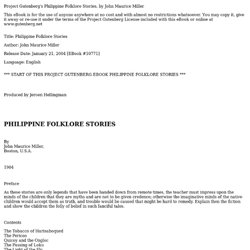
You may copy it, give it away or re-use it under the terms of the Project Gutenberg License included with this eBook or online at www.gutenberg.net Title: Philippine Folklore Stories Author: John Maurice Miller Release Date: January 21, 2004 [EBook #10771] Language: English Produced by Jeroen Hellingman By John Maurice Miller, Boston, U.S.A. Preface As these stories are only legends that have been handed down from remote times, the teacher must impress upon the minds of the children that they are myths and are not to be given credence; otherwise the imaginative minds of the native children would accept them as truth, and trouble would be caused that might be hard to remedy.
Contents. Jamaica Anansi Stories Index. Sacred Texts Africa Music transcribed by HELEN ROBERTS Jump to Index Start Reading This classic of Jamaican folklore was collected by Martha Warren Beckwith, whose translation of the Hawaiian Creation epic, the Kumulipo, is also at sacred-texts.
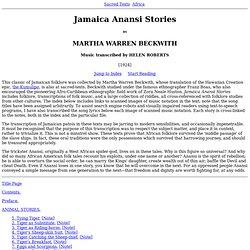
SAIL Ser.2, 12.4. Anansi. Anansi (/əˈnɑːnsi/ ə-NAHN-see) the trickster is a West African god.

Iktomi. Iktomi depicted sitting by the fire.

In Lakota mythology, Iktomi is a spider-trickster spirit, and a culture hero for the Lakota people. Alternate names for Iktomi include Ikto, Ictinike, Inktomi, Unktome, and Unktomi. These names are due to the differences in tribal languages, as this spider deity was known throughout many of North America's tribes. Coyote (mythology) Coyote canoeing, in a traditional story.
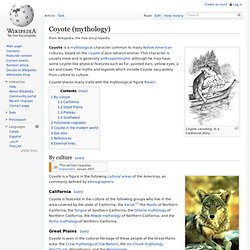
Coyote is a mythological character common to many Native American cultures, based on the coyote (Canis latrans) animal. This character is usually male and is generally anthropomorphic although he may have some coyote-like physical features such as fur, pointed ears, yellow eyes, a tail and claws. The myths and legends which include Coyote vary widely from culture to culture. Coyote shares many traits with the mythological figure Raven. Raven in mythology. There are many references to ravens in legends and literature.
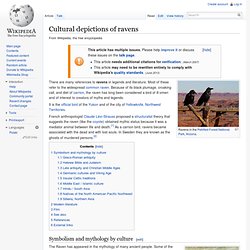
Most of these refer to the widespread common raven. Greek hero cult. Hero cults were one of the most distinctive features of ancient Greek religion.
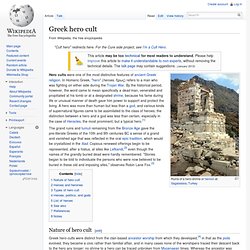
In Homeric Greek, "hero" (heroes, ἥρως) refers to a man who was fighting on either side during the Trojan War.
Deities of Philippine mythology. Deities of Philippine Mythology List of Gods and Goddesses[edit] Ancient Philippine mythology varies among the many indigenous tribes of the Philippines.
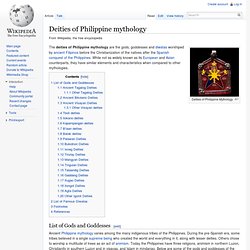
During the pre-Spanish era, some tribes believed in a single supreme being who created the world and everything in it, along with lesser deities. Others chose to worship a multitude of trees as an act of animism. Today the Philippines have three religions, animism in northern Luzon, Christianity in southern Luzon and in visayas, and Islam in mindanao. Ancient Tagalog Deities[edit] Philippine mythological monsters - INQUIRER.net, Philippine News for Filipinos. This Saturday is All Saints?
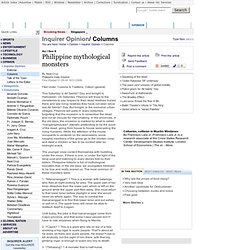
Day and tonight is Halloween. On Saturday. Filipinos will troop to the cemeteries to pay respect to their dead relatives buried there and see living relatives they have not seen since last All Saints? Day. Philippine folk tales. Horae. In Greek mythology the Horae (/ˈhɔːriː/ or /ˈhɔːraɪ/) or Hours (Greek: Ὧραι, Hōrai, pronounced [hɔ̂ːraj], "seasons") were the goddesses of the seasons and the natural portions of time.
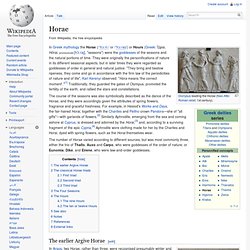
They were originally the personifications of nature in its different seasonal aspects, but in later times they were regarded as goddesses of order in general and natural justice. "They bring and bestow ripeness, they come and go in accordance with the firm law of the periodicities of nature and of life", Karl Kerenyi observed: "Hora means 'the correct moment'. Roud Folk Song Index. The Roud Folk Song Index is a database of nearly 200,000 references to nearly 25,000 songs that have been collected from oral tradition in the English language from all over the world.
It is compiled by Steve Roud, a former librarian in the London Borough of Croydon.[1] Roud's Index is a combination of the Broadside Index (printed sources before 1900) and a "field-recording index" compiled by Roud. It subsumes all the previous well-known printed sources known to Francis James Child (the Child Ballads) and includes recordings from 1900 to 1975. Until early 2006 the index was available only by a CD subscription; it can now be found online on a website maintained by the English Folk Dance and Song Society.[2] A partial list is also available at List of folk songs by Roud number.
Function of index[edit] Numbering scheme and cross references[edit] The purpose of the index is to give each song a unique identifying number. Closely related songs are grouped under the same Roud number. The Tale of the Bamboo Cutter. Discovery of Princess Kaguya The Tale of the Bamboo Cutter (竹取物語, Taketori Monogatari?) , also known as Princess Kaguya (かぐや姫, Kaguya Hime? , 赫映姫 or 輝夜姫), is a 10th-century Japanese folktale.